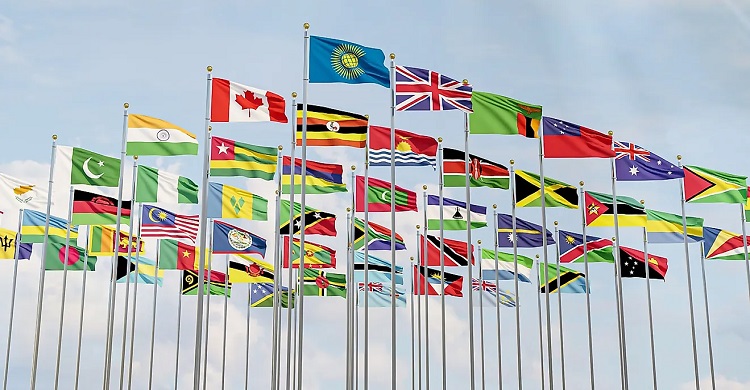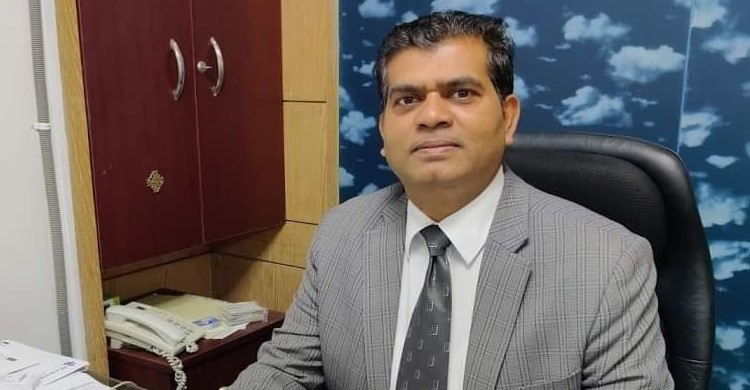
- Open Discussion
- Lead News
Road Safety in Bangladesh through Enforcement and Communication
- Open Discussion
- Lead News
- 28 February, 2023 08:26:06
Special Correspondent: Al Stewart, a highly experienced road safety consultant from the Asia Pacific Region, recently visited Bangladesh to address the ongoing issue of road safety in the country. Al Stewart LLB, NZBM is a Consultant, Asia Pacific Region, Global Road Safety Partnership (GRSP). The Global Road Safety Partnership (GRSP) and the Bloomberg Initiative for Global Road Safety (BIGRS) are both initiatives aimed at improving road safety around the world. Both the GRSP and BIGRS work towards improving road safety globally using a partnership-based approach; where capacity-building in prevention-based enforcement works together with legislative and policy development, infrastructure design, communications and public health in low- and middle-income countries through effective road safety interventions.
During his recent visit to Bangladesh on behalf of GRSP and BIGRS, he emphasized the importance of high visibility, legitimate enforcement, and communication as key pillars of any effective road safety strategy. He also stressed the importance of capacity building, including training programs for law enforcement officials, to enhance road safety practices and reduce the risk of road crashes through applying aspects of effective global road safety enforcement models to the local enforcement environment. Finally, Mr. Stewart highlighted the need for effective communication strategies to raise public awareness about the importance of road safety. In a candid conversation with Ms. Khaleda Jasmin, Consultant, Dhaka North City Corporation-BIGRS Program, the road safety expert Mr. Al Stewart shared his observations and insights on the road safety situation in Bangladesh.
During his recent visit to Bangladesh on behalf of GRSP and BIGRS, he emphasized the importance of enforcement, capacity building, and communication as key pillars of any effective road safety strategy. He also stressed the importance of capacity building, including training programs for law enforcement officials, to improve road safety practices and reduce the risk of road crushes. Finally, Mr. Stewart highlighted the need for effective communication strategies to raise public awareness about the importance of road safety. In a candid conversation with Ms. Khaleda Jasmin, Consultant, Dhaka North City Corporation-BIGRS Program, the road safety expert Mr. Al Stewart shared his observations and insights on the road safety situation in Bangladesh.
- What are you focusing on in your visit to Bangladesh? Having worked with the Dhaka Metropolitan Police (DMP) over the past eighteen months to deliver capacity-building training, virtually due to COVID, in Road Policing Leadership, Intelligence-Led Policing and Crash Investigation, we are pleased to be here in person to enhance those existing relationships and create new connections with the Dhaka North City Corporation (DNCC), Chattogram Metropolitan Police (CMP) and Chattogram City Corporation (CCC) towards getting a better understanding of the enforcement environment to allow us to develop training and operational strategies going forward to assist in reducing road trauma. We have been fortunate to receive a great deal of support for this program so far and look forward to working with our local partners over the next few years.
- What are the important factor to ensure road safety? Leadership and communication. Leadership is a prime factor in the success of road safety interventions. Whenever organizations change their operating model, it requires strong, clear leadership to share the vision and demonstrate the value of proposed changes; explaining how each employee’s role contributes to the overall goals. If staff understand the reason why they come to work, are trained and equipped to achieve their tasks, they perform at a higher level. That is no different for police services and associated agencies proactively targeting road safety risks through an evidence-based, general deterrence enforcement model. We also see in jurisdictions globally that have made significant reductions in road trauma a partnership between enforcement activity and related social media and marketing campaigns. This has the benefit of educating the public as to the risks they are taking due to their driving behavior, and also raises the perception of detection, due to their awareness of increased police activity and their experience of seeing it in action on the road network. This general deterrent enforcement model changes driver behavior and increases the safety of all road users.
- What is the role of enforcement in ensuring road safety?
Enforcement is part of a wider ‘Safe System’ model that looks at every part of the road network and, working together, partners can address any current or emerging road safety risks by putting in place evidence-based road safety interventions. High-visibility enforcement, supported by an extensive social media and marketing campaign, raises the awareness of risk and perception of detection and in doing so affects the decisions that drivers make to speed, wear their seatbelt or motorcycle helmet, or use their cell phone. The more road users perceive that they will be caught by police and receive a penalty, the less likely they are to offend, and this results in them and all other road users around them being safer.
4. What are your suggestion for improving enforcement?
Firstly, by identifying your local road safety risks. Police services, just like other large organizations, only have limited resources and these have to be deployed effectively to make a difference. Where we are able to access available information from police enforcement, crash scene investigation, offense rates and partnership information (hospitalization injury data and insurance claims), analyze the data and identify high-risk behaviors and locations, we can deploy effectively to those risks. It also allows us to fully inform the public about the reasons why we are increasing enforcement in those areas. The aim of police road safety enforcement is to keep road users safe, and this is an important message that we need to send to members of the community. Everybody has the right to leave their home at the start of the day and return there safely again that evening. For too many people, this isn’t the case and the role of enforcement in the overall ‘Safe System’ model is to change that.
5. How is enforcement related to Communication?
Communication is essential in working alongside enforcement to increase the general public awareness of road safety risks and to deter poor driving behavior. It allows us to fully inform the community of the reasons for any increased enforcement, focus on high-risk locations or behaviors through an evidence-based intelligence process, and to seek their support in making the road network safer. A community that understands the issues and sees the value of legitimate road safety partner activity will support it going forward.
6. Your suggestions for Bangladesh regarding road safety?
Bangladesh agencies that we are working with have shown clearly that they want to enhance their knowledge of global best practice road safety models and partnership interventions toward reducing the current levels of road trauma. There is support from the Central Government through the Road Transport Act 2018 and the recent passing of the Road Transport Rules 2022 for enforcement activity that targets risk behaviors. Through leadership and the application of global best practice operational strategies and road safety interventions, the DNCC, DMP, CCC and CMP will be able to make significant reductions in road trauma through changing driver behaviors. Changing entrenched behaviors is a long-term commitment, but the leaders we have met in Bangladesh have shown their willingness to start the process towards creating a safer city for their communities.

























Comment ( 0)